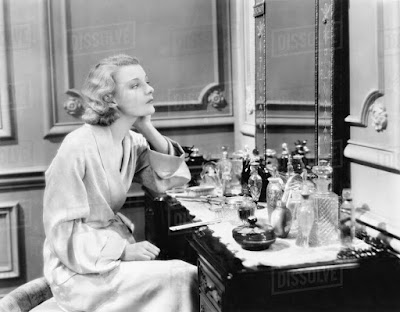The very first thing I remember was me trying to wear a pair
of pink ballet shoes and my Mother's voice from the background saying: “Go to Nona
she wants to see your fancy dress.”
Another scene was my beautiful mother, sitting at her
dressing table, brushing her gleaming hair.
In our garden, in Karachi, which was then in British India, my
finger was bitten by an "enormous" ant and it bled. I quickly brushed the poor little creature away, which must have been terrified of this giant.
I remember how happy I was when my dear Father returned home each day from his office. He always brought me a
small gift. A multi-coloured ball, a tiny baby doll, a lolly-pop, and he was such a fantastic
storyteller. His stories continued for
three or four days and I had a vague feeling that they were imaginary although they seemed real, as he imitated known voices and he referred to real events.
As I grew up I remember happenings, some were pleasant and exciting like fairy tales, others we frightening like ghost stories and some we just boring.
 |
| Entrance Gate of the Auswitch Concentration Camp, Krakow Poland |
So life went on in India and later in Cephalonia where my parents and I spent the terrible years of World War II. Our house was requisitioned first by the Italians and subsequently by the Germans so we, like most of our compatriots, tried to survive, desperately attempting to make ends meet. But it was much worse for others because during the very cold winter of 1940-1941 thousands of Greeks died of starvation and many of our Jewish compatriots, like tens of thousands of European Jews were brutally murdered in the notorious concentration camps by the ghastly Nazi criminals.
After the war, we returned to India and I went to Auckland House School in Simla, I was extremely homesick in the beginning, but soon I recovered and I was very happy. The teachers were excellent and the girls were very pleasant. Simla was like no other town or hill station in India. The Mall with its shops and stores, Christ Church Cathedral with its Tudor-styled belfry, the esplanades and the houses with their immaculate gardens all seemed to typically English, the only dissimilarity being the pitter-patter of the rickshaws and the monkeys on the trees.
During the summer of 1947, the British left India so the Subcontinent was partitioned into Hindu India and Muslim Pakistan. Unfortunately, a deadly civil war took place with thousands of innocent victims, whole families with young children were massacred, on both sides, due to religious and racial discrimination.
As we were living in Karachi, the capital of Pakistan, at the end of the school year, a few classmates and I went back home under military escort and, unfortunately, I never returned to Simla of which I am so fond.
(To be continued)
 |
| Britsh India |
 |
| Auckland House School |
 |
| Christ Chruch Cathedral |
 |
| Typical Himalayan Architecture |
After the war, we returned to India and I went to Auckland House School in Simla, I was extremely homesick in the beginning, but soon I recovered and I was very happy. The teachers were excellent and the girls were very pleasant. Simla was like no other town or hill station in India. The Mall with its shops and stores, Christ Church Cathedral with its Tudor-styled belfry, the esplanades and the houses with their immaculate gardens all seemed to typically English, the only dissimilarity being the pitter-patter of the rickshaws and the monkeys on the trees.
During the summer of 1947, the British left India so the Subcontinent was partitioned into Hindu India and Muslim Pakistan. Unfortunately, a deadly civil war took place with thousands of innocent victims, whole families with young children were massacred, on both sides, due to religious and racial discrimination.
As we were living in Karachi, the capital of Pakistan, at the end of the school year, a few classmates and I went back home under military escort and, unfortunately, I never returned to Simla of which I am so fond.
(To be continued)
.




No comments:
Post a Comment